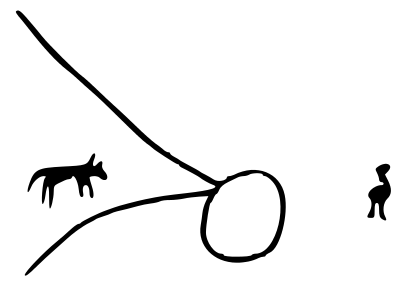The last week or so, I’ve been spending a lot of time obsessively checking how my new book is doing on Amazon. This morning, in a bout of such checking, Amazon offered to show me its “Movers and Shakers: Our biggest gainers in sales rank over the past 24 hours. Updated frequently.”
This is something I had long wished for but didn’t know existed — a kind of first derivative of sales, what’s selling better lately, what’s moving up in the ranks quickly?
I checked the Kindle store. Unfortunately, there are just two pages of movers and shakers for the entire Kindle store, as opposed to movers and shakers across subcategories.
And what is moving and shaking in the Kindle store?
The same damn stuff as always.
Out of the 100 top movers and shakers, 99 are fiction books, mostly romance novels and literotica. Exactly one is a non-fiction book, Mark Manson’s Subtle Art of Not Giving a Fuck, which, based on its promise alone, might as well be classified as fiction.
This made me think of something I heard Dan Kennedy say in one of his closed-door, multithousand-dollar, info marketing seminars. Said Dan:
===
Many people make the mistake of thinking we’re in the non fiction business. Big mistake. We’re in the fiction business. First of all, remember that most of your customers never do anything with most of what they buy from you, therefore, their experience is fictional, not non-fictional. [The small audience of top info marketers laughs, but Dan continues.] Laugh if you want. I’m being very serious. They’re having a fictional experience. They actually believe they’re doing something. they are not, but they think they are doing something.
===
If you sell information online, this is a very bitter pill to swallow, and in fact, it’s one that I keep refusing to swallow.
Which is dumb, because why argue against Dan Kennedy, who basically made everybody who has been successful in the info publishing business?
But I keep hoping and in fact working on getting people to not just buy my stuff, but to actually consume it, and ultimately, to put it to use and to benefit from it. It’s slow going, but it gives me hope and a goal to look forward to.
Anyways, as I say in the conclusion of my new 10 Commandments book, I hope you will apply the 10 principles I share in that book in your own business and personal life.
I’ve worked hard to make the book both interesting and practical, with new distinctions to help you actually get traction, putting to work good ideas that you may have heard of before but haven’t done anything with. Of course, you might also come across commandments that are entirely new to you. Put those to work as well.
And on that note, I’ve gotten a few more reviews after writing my dirge about having just one review a few days ago. Here’s a review from Maliha Mannan, who writes over at The Side Blogger:
===
As someone who makes an offer almost daily via email, it’s essential that people like me, and also buy from me. This book is full of ideas for doing just that. I read it too quickly, so I plan to read it again soon (it’s a tiny book but packed with curious ideas that you should take a minute to fully comprehend, appreciate, and implement). I see it becoming one of those books I read at least once a year. It’s that good!
===
In case you too would like to get a copy of my new non-fiction book:
